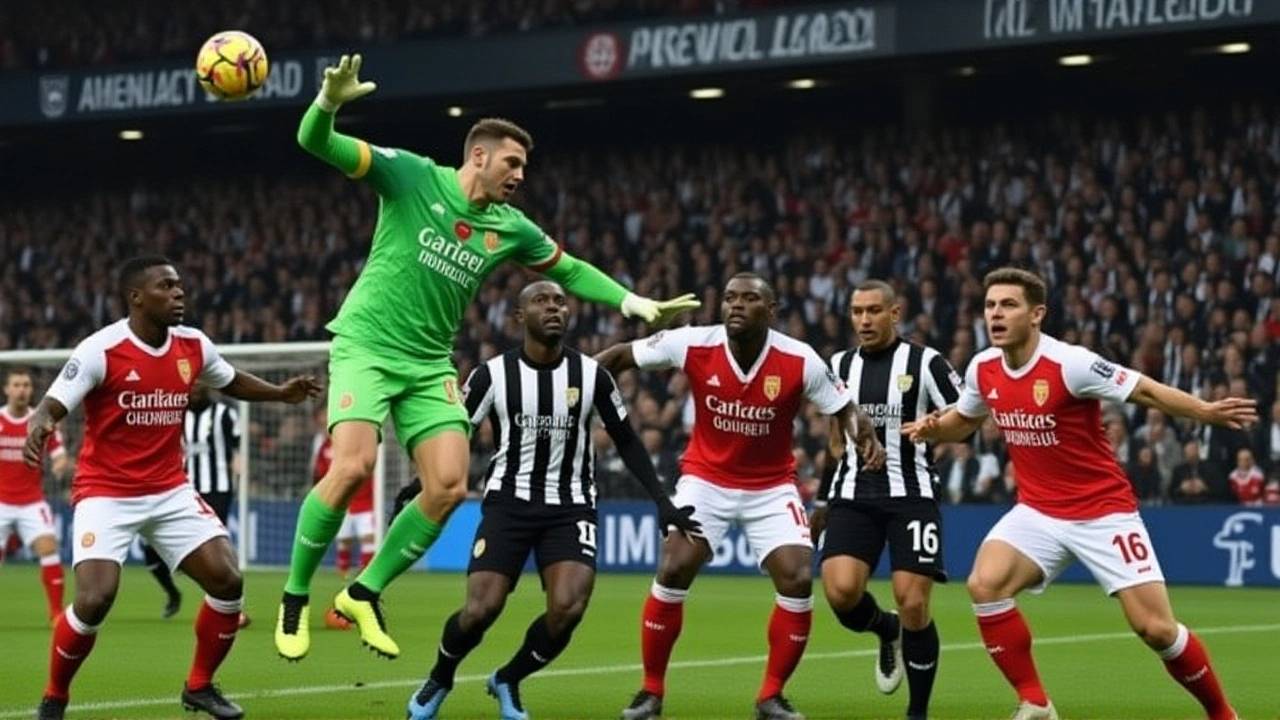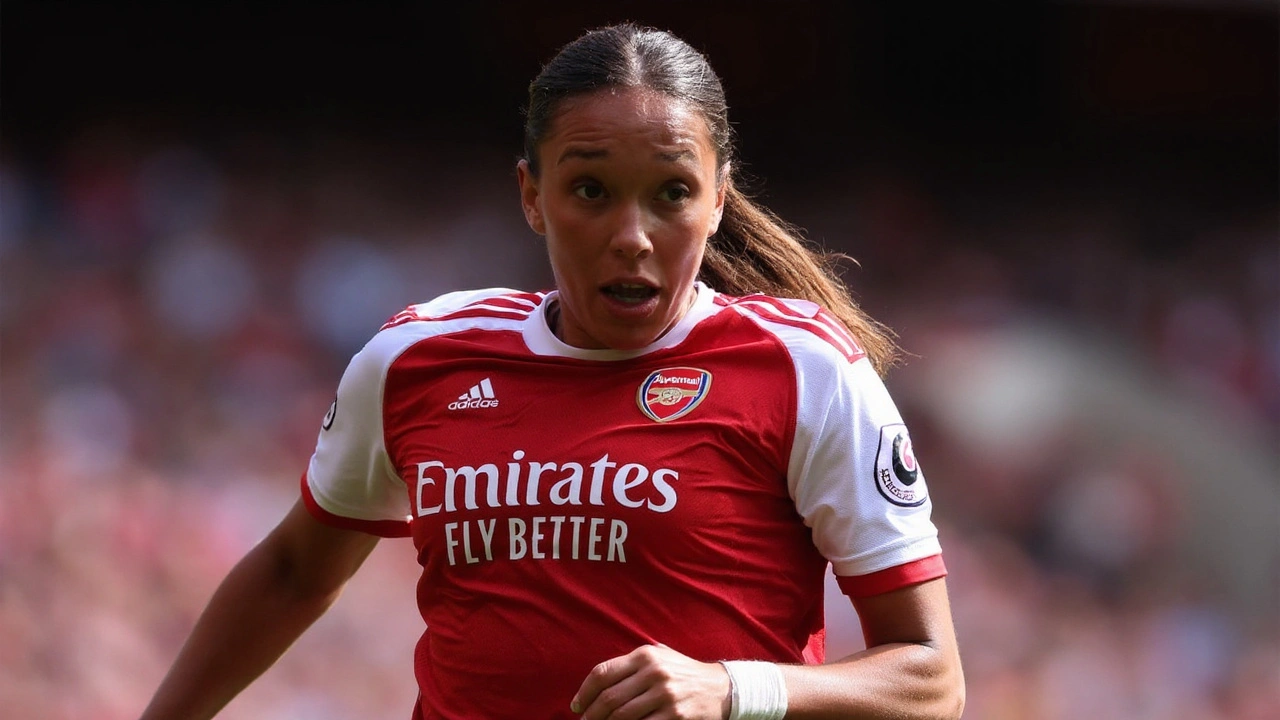The North London derby is set to ignite at Emirates Stadium on Sunday, November 23, 2025, at 16:30 UTC — and this time, the drama isn’t just about goals, it’s about gaps in the backline. With Gabriel Magalhães sidelined due to undisclosed fitness concerns, Arsenal manager Mikel Arteta has thrown 21-year-old Colombian defender Piero Hincapie into the lion’s den. No pressure, right? But here’s the thing: Hincapie isn’t just filling in. He’s stepping into the shoes of a player who’s been Arsenal’s defensive rock since 2020 — and doing it against a Tottenham Hotspur side firing on all cylinders under Ange Postecoglou.
Defensive Dominoes: Gabriel’s Absence Changes Everything
Gabriel Magalhães, the 27-year-old Brazilian who arrived from Lille OSC for £27 million in 2020, has made 15 Premier League appearances this season — and started every single one. His physicality, aerial dominance, and calmness under pressure have been vital. His absence? That’s not just a rotation. It’s a seismic shift. Without him, Arsenal’s backline loses its anchor. Enter Hincapie. The Colombian, signed from Bayer Leverkusen in 2024, has been a rising star in the reserves. But this? This is his first Premier League start against Tottenham. He’s never played a full 90 minutes against them. And now, he’s tasked with containing Richarlison and Mathys Tel — two pacey, unpredictable forwards who thrive on counterattacks.Arteta’s decision isn’t just reactive. It’s strategic. Hincapie’s mobility, long-range passing, and ability to step into midfield could help Arsenal maintain their signature 60.9% possession average — but it also leaves space behind. The twist? Hincapie isn’t playing alongside Saliba. He’s playing next to Jurrien Timber. That’s a pair of left-footed defenders on the right side of the center-back pairing. Odd? Yes. Risky? Absolutely. But Arteta knows he can’t afford to sit back. Not here. Not now.
Tottenham’s Tactical Shift: Wing-Backs on the Warpath
Meanwhile, at the other end of the North London corridor, Tottenham Hotspur have reshaped their entire structure. In their last outing — a 2-2 draw against Manchester United — Postecoglou sacrificed Xavi Simons for extra defensive cover. Now, he’s gone even further. Djed Spence and Destiny Udogie are starting as wing-backs, not wingers. That’s a clear signal: Tottenham intend to stretch Arsenal’s defense, exploit the flanks, and punish any hesitation in transition.And it’s working. Tottenham’s last four matches have seen them score 11 goals while conceding just three. Their 55% average possession against United wasn’t just control — it was orchestration. With Rodrigo Bentancur now anchoring midfield in place of Pape Sarr, and Mohammed Kudus returning from injury to add physicality up front, Spurs feel dangerous. Their +1.25 goal handicap in betting markets isn’t just hype — it’s a reflection of how much confidence they’ve built.
Numbers Don’t Lie — But They Don’t Tell the Whole Story
Arsenal’s stats are jaw-dropping: 7 wins, 1 loss, 2 draws. 1.9 goals per game. 60.9% possession. Six clean sheets from David Raya. Bukayo Saka has 3 goals, Leandro Trossard 2, and Declan Rice — yes, the £100 million midfielder — has 2 assists. But here’s what the numbers hide: Arsenal have conceded 6 of their 14 goals in the final 15 minutes of matches. That’s not luck. That’s fatigue. Or pressure. Or both.Tottenham? They’ve scored 20 goals in 21 games. But they’ve also conceded 14 — and three of those came in the last 10 minutes of games. Both teams are fast, both are brittle at the death. The derby isn’t just about who scores first. It’s about who holds their nerve when the stadium starts shaking.
Emirates Stadium: The Stage for History
Since 2006, Emirates Stadium has been the battleground for this rivalry. 60,704 fans. Roaring. Divided. This isn’t just another match. It’s the 197th North London derby since 1909. The last time Arsenal lost at home to Spurs? 2021. Since then, they’ve won four, drawn two. But this time, the narrative is different. No Gabriel. No Martin Odegaard (on the bench). No Gabriel Martinelli. The Gunners are thin. And Tottenham? They smell blood.Arteta’s gamble is clear: trust youth over experience. Hincapie’s speed might nullify Tel’s runs. Rice’s positioning might cover the gaps. But if Spence and Udogie get space? If Kudus wins his duels? If Bentancur controls the tempo? Then this could be the day Tottenham finally turn the tide in their favor.
What’s Next?
The winner of this match will leapfrog the other in the Premier League table. Arsenal’s next fixture? A trip to Manchester City on November 29. A loss here, and the title race gets a lot more complicated. Tottenham face Chelsea on November 30 — a match that could define their European ambitions. Neither side can afford a slip.One thing’s certain: this isn’t just about three points. It’s about pride. Legacy. And for Hincapie? It’s about proving he belongs.
Frequently Asked Questions
Why is Piero Hincapie starting over other center-backs like William Saliba or Gabriel Jesus?
Hincapie is starting because Gabriel Magalhães is injured, and Mikel Arteta chose to pair him with Jurrien Timber — a left-footed duo on the right side of defense — to maintain positional balance and ball-playing ability. Saliba is still fit, but Arteta likely wants Hincapie’s mobility to counter Tottenham’s pace. Gabriel Jesus, meanwhile, isn’t a center-back — he’s a striker.
How has Arsenal’s defense performed without Gabriel Magalhães in recent games?
Arsenal haven’t played without Gabriel since early October, but in his absence during the FA Cup, they conceded twice in 120 minutes against West Ham. The team’s average goals conceded per game rises from 0.5 to 1.1 when he’s not on the pitch. His aerial win rate (78%) is unmatched in the squad — a gap Hincapie can’t fully replicate.
What’s the historical significance of this North London derby?
This is the 197th meeting between Arsenal and Tottenham since 1909. Arsenal lead the head-to-head 85-77 with 34 draws, but Tottenham have won the last two derbies at Emirates Stadium — including a 2-1 victory in April 2024. The rivalry is fueled by proximity, contrasting identities, and decades of tension — making this one of football’s most emotionally charged fixtures.
Are there injury concerns beyond Gabriel Magalhães for Arsenal?
Yes. Martin Odegaard and Gabriel Martinelli are both on the bench after recovering from minor knocks, but neither started. Noni Madueke, who was expected to feature, didn’t make the squad. The midfield also lacks depth — Thomas Partey is still out, and Mohamed Elneny is suspended. Arteta’s rotation is thin, making Hincapie’s debut even more critical.
Why did Tottenham bring in Mohammed Kudus and Wilson Odobert?
Kudus returns from injury to add physical presence and pressing intensity — replacing Brennan Johnson, who struggled to hold up play. Odobert, a 19-year-old French winger, brings directness and pace to replace Randal Kolo Muani, who’s been ineffective in the final third. Postecoglou wants more verticality, and these changes reflect that shift in attacking philosophy.
What does this match mean for the Premier League title race?
A win for Arsenal would put them within two points of leaders Liverpool, while a Tottenham victory would close the gap to just one point behind the top four. With Manchester City looming next for Arsenal and Chelsea for Spurs, this game could determine who controls their own destiny in the top-four race — or even the title hunt if the leaders falter.


